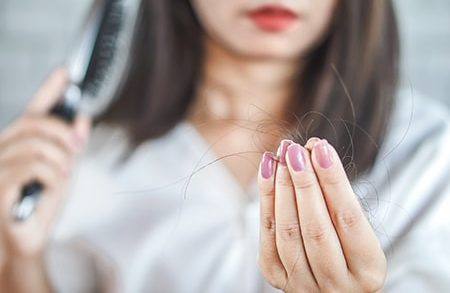Face oils are liquid moisturizers that have many benefits. They’re often made of oils with high nutritional value and stored in tiny vials. You can make it at home. Yes, you read it correctly. You can also customize your facial oil recipe and ingredients to meet your needs by DIYing it.
Facial Oils are oil-based liquids that moisturize the skin to give it a supple, soft look. Facial oils contain a combination of non-comedogenic oils and essential oils. If you choose suitable oils, DIY facial oils won’t clog your pores. They contain antioxidants and plant extracts to balance your skin.
The facial oils you use are designed to match the natural oils in your skin to maintain balance and transform dull skin into a gleaming complexion. Continue reading to learn how to create facial oils using essential oils for your skin.
Are serums and natural face oils the same thing?
You may have seen a “serum” from one of your favorite brands, only to discover the formula is oil-based. It’s likely that the “serum” you found is, in fact, a facial oil.
- Serums, aqueous solutions used to hydrate the skin in a skincare routine, serve a different purpose than oil-based moisturizers. Learn more about face serums and their benefit. On the other hand, natural facial oils d, do not usually contain aqueous ingredients; they are bad must-have carrier oil. Optionally, the base can be mixed with essential oil for added benefits.
It would help to consider your skin’s needs when making your DIY facial oil. Is your skin oily, or is it dry? What carrier oils are best for your skin? Fun fact: Different oils have different molecular weights, and choosing one that works with your skin is essential. You must select a carrier oil compatible with your skin type and essential oils for sensitive skin or temporary redness.
Natural Face Oil Recipe
What is the skin type of my body?
You might wonder about skin typeface since a customized recipe will require that information. People with skin problems are often associated with oily, but they don’t necessarily automatically be oily.
After cleansing your face, allow it to dry naturally. You might have dry or normal skin if your skin feels tight. If your skin feels light after washing it, you probably have a combination of oily skin.
Choose the carrier oil that is best for your skin.
You’ll need to start by choosing your carrier oil. Carrier oils are great bases for facial oil because they work well with the skin.
Although this myth has been debunked recently, some people are still concerned about applying facial oils to their faces. This is mainly because they fear it will cause skin problems due to clogged pores. These oils are good for your skin because they contain the same ingredients as our skin. They also keep dryness at bay without blocking your pores.
- For dry or mature skin: Jojoba oil (or any other oil), sweet almond oil (or any other oil), hemp oil, sunflower oil, avocado oil, or apricot kernel oil.
- Standard or combination skin: Jojoba, grapeseed, sunflower seed oil.
- Oily Skin: Grapeseed, hemp, chia, or rosehip seed oils.
Use of carrier oil on the skin
- Apricot Kernel Oil: Provides deep nourishment to the skin and reduces wrinkles. The oil is also rich in antioxidants that help to keep skin healthy.
- Grapeseed Oil: This excellent, lightweight oil quickly absorbs into the skin. It works well for those who have visible oil production. This is the base for our Herbal Facial Oils, Normal and Combination Skin, Oily skin, and sensitive skin.
- Jojoba Oil: Similar to the natural oils of your skin and deeply moisturizing. It helps your skin absorb other ingredients and protects its youthful glow.
- Hemp Oil: Has deeply moisturizing, soothing, and calming properties.
- Sunflower Seed Oil: A powerful antioxidant protecting skin from environmental stressors.
- Sweet Almond Oil: Reduces puffiness temporarily, protects skin from harsh elements, and improves tone.
- Argan Oil: Rich in antioxidants. Moisturizes and reduces temporary skin redness.
- Avocado Oil: Moisturizes and soothes the skin.
- Rosehip Seed Oil: Calms and soothes temporary redness and sensitivities, tightens and firms.
- Use essential oils as an accessory to target your skin’s needs.
Essential oils work well for all skin types. Include essential oils when making DIY face oil to narrow your skin goals, such as hydration boost, soothing skin, and reducing temporary redness.
You should combine essential oils with carrier oils when making facial oils. They are too powerful and can do more harm than good. You must combine 1-2% of the essential oil you choose with a carrier to make a face oil that can be used daily.
Essential oils recommended based on skin types
- Dry Skin: Essential Oils of Lavender, Rose, Frankincense, Myrrh or Geranium
- Normal skin or combination: Essential oil of lavender, frankincense, or geranium
- Use essential oils such as frankincense or lavender for dry or aging skin.
Benefits of essential oils on the skin
- Lavender: Calms the skin, soothes itching, and helps balance natural oils.
- Frankincense Calms the skin and treats skin problems caused by clogged pores.
- Myrrh: Reduces fine lines and wrinkles on the skin and soothes it.
- Clary Sage: Alleviates skin redness and discomfort.
- Geranium: Reduces skin sensitivity and issues caused by clogged skin pores.
- Rose: Renews skin appearance and reduces dark spots.
- Helichrysum Promotes a more even skin tone and reduces wrinkles and fine lines.
- Cypress: Firms, tightens, and gives a new and revitalized look.



